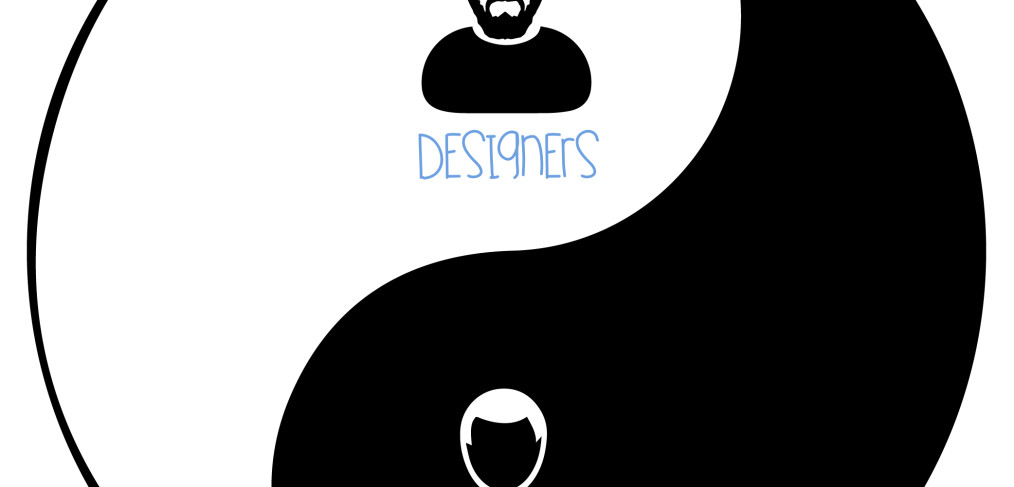
The design-business ‘Yin and Yang’
Life is made of stereotypes. We make stereotypes about people in order to make sense of the world.
When we meet and interact with people, we want to know who and how they are in order to successfully communicate with them. We stereotype about facts such as nationalities, styles and, of course, professions. Within the latter, a distinctive aspect is the relation between design and business people (i.e. marketers) when it comes to strategic projects. I could imagine, me personally as a designer, being exasperated about the ‘thinking-inside-the-box’ and ‘too-much-down-to-earth’ attitude of that people wearing spotless suits and ties.
From personal experiences and research literature, most of us designers are aware of the dissimilarity of objectives, mindsets and tools when it comes to the interaction between design and business people. While business people focus on the current market and clients’ needs, they are more short-term oriented and they have a preference towards incremental innovations; designers envision future scenarios, are long-term oriented and have a predilection for radical innovations (Calabretta, Gemser and Wijnberg, 2015).
Beverland and Farrely (2011) metaphorically described the distinctness in both approaches as ‘Shape vs. Fit’: while designers primarily focus on shaping their worlds and leading customers to potential future scenarios, marketers approach projects by fitting the current market and customer situation (Beverland and Farrely, 2011). Moreover, Calabretta, Gemser and Wijnberg (2015) defended the dissimilarity of strategic decision-making approaches between both parties, being designers more prompt to rely on intuition and marketers on rationality.
So what does this difference in mental frames between marketers and designers imply? While they share similar language and intentions, they have a different means to an end. Both perspectives are useful for coming up with fruitful and sustainable solutions. In other words, they are complementary, not incompatible, what I like to call the design-business ‘Yin and Yang’. The problem in interaction comes when we blindly believe in the stereotypes and when we are convinced that our way of thinking and acting is the correct one and that no combination of both professions mindsets, objectives and tools is possible.
Everyone has their own way of thinking and acting based on their own experience and cultural assumptions. The problem comes when these different approaches crash and there is a lack of agreement and collaboration between parties. People by nature are reluctant to change and accept each other’s perspectives. Therefore, there are many approaches and models available for achieving an integration and collaboration between all the stakeholders of a strategic project. However, the main key and starting point is motivation and willingness to understand each other’s perspectives. People have to be open-minded and eager to step into the others’ shoes. Without empathy, no shared understanding is possible.
References:
- Beverland, M.B. and Farrelly, F.J. (2011), Designers and Marketers: Towards a Shared Understanding. Design Management Review, Vol. 22 (3), 62-70.
- Calabretta, G., Gemser, G., and Wijnberg, N. (2015). The interplay between intuition and rationality in strategic decision making: A paradox perspective. Organization Studies, forth coming.






